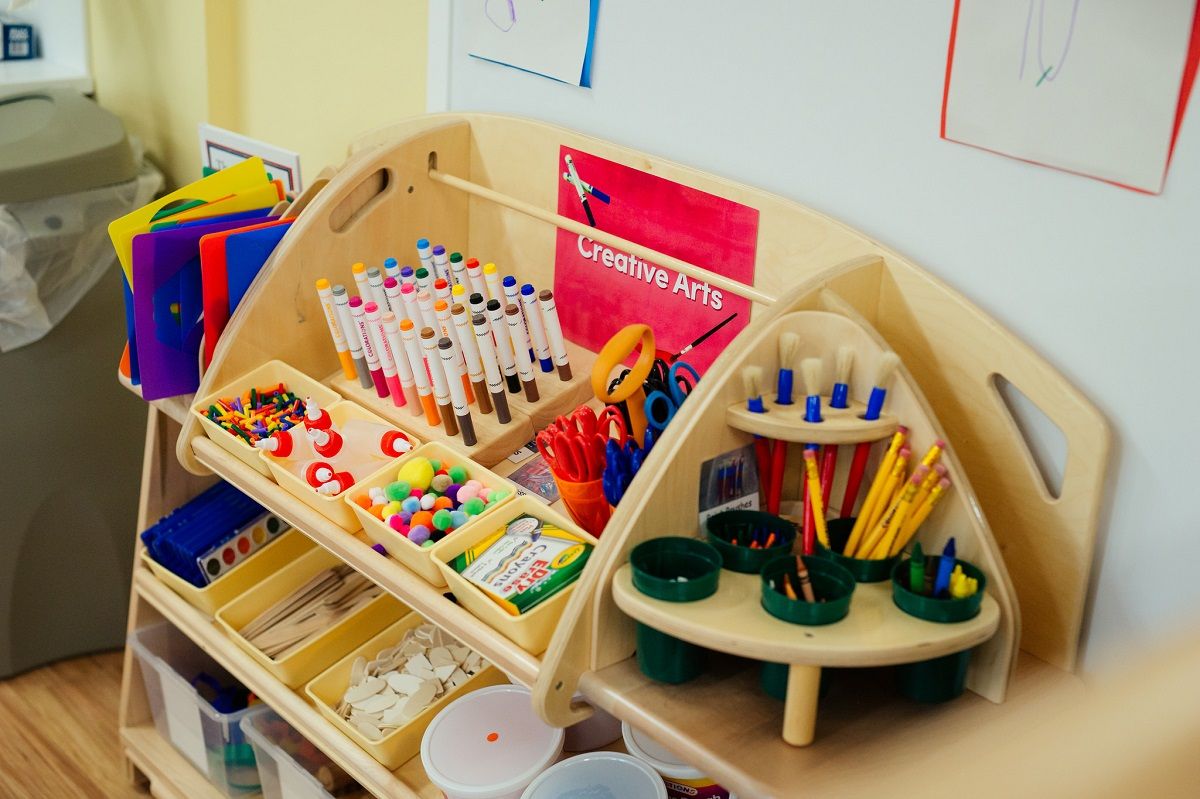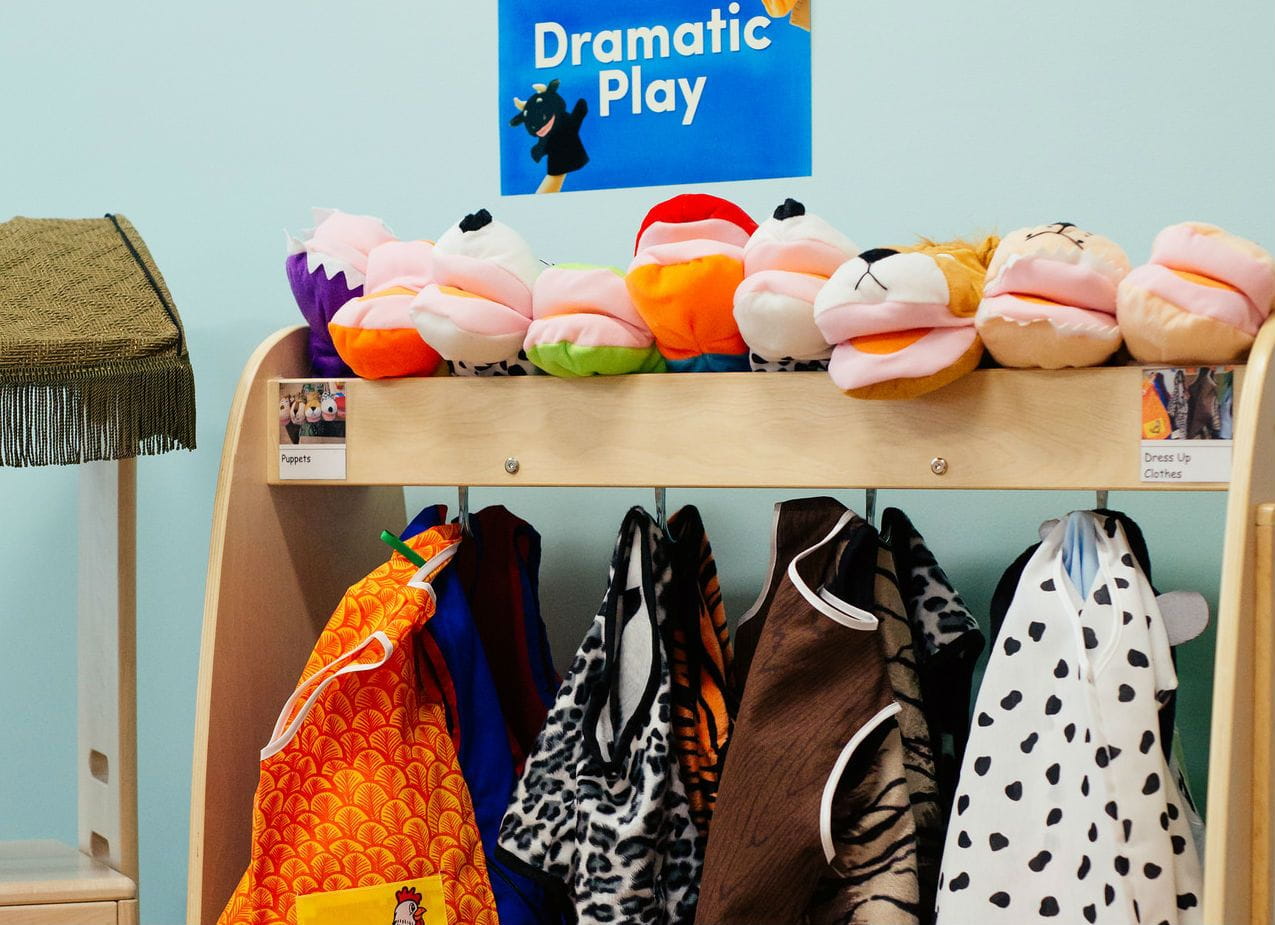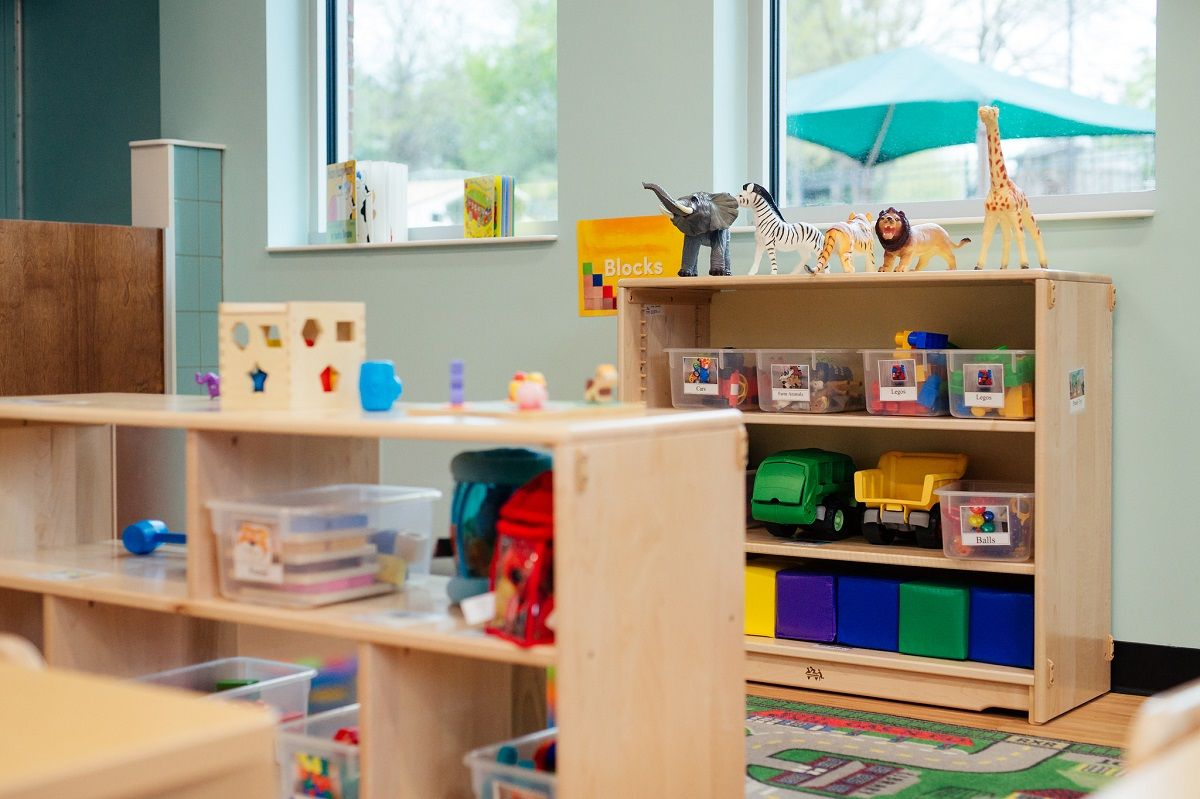Words Are Everywhere! 4 Reasons Why the Print-Rich Classroom Is Best

By Cheryl Flanders
Maybe you’ve walked into your child’s classroom and noticed that a lot of items—the sinks, the bookshelf, the tub full of musical instruments—are labeled, with pictures and words. For adults, this may look a little, well, strange. After all, you can see with your own eyes where the blocks are, and you know a clock when you see one. So what’s with the labeling? Is there a reason that two-year-olds (who most certainly cannot yet read) need a sign that says “blocks” to be attached to a bin of blocks?
There is in fact a very good reason: Research shows that a print-rich classroom not only supports development of literacy skills, it also inspires a lifelong love of reading (even if kids aren’t reading yet).
Here’s how labeling works: At first, your child will learn to “read” the pictures and suss out what they mean (“This bin has a picture of a truck on it, so the toy trucks must go here.”) Gradually, they’ll understand there’s a connection between the pictures and the written words. The next step? They’ll become aware that those letters under the picture represent both the object and the sounds we use to name the object—and so begins their journey down the road to literacy.

1. Print-Rich Classrooms Can Offer Insight into a Center’s Educational Values
Most early childhood classrooms have spaces designated for certain activities, and so there are usually labels at each one to help kids know where to go. You may see signs or picture labels on the blocks corner, the creative arts or dramatic play center, the science area, the library, or the math and manipulatives center. Checking out the signs also helps adults assess what an early learning center teaches and what it values educationally.
2. Classroom Labels on Cubbies Give Children a Sense of Belonging
Your child’s personal space will have their name printed on it. This label is about more than just identification—it helps kids learn to recognize their name in printed form (a pre-reading skill). Plus, they get a great self-confidence boost seeing their name and knowing they have a place all to themselves in the classroom!

3. Labeled Storage Bins Encourage Child-Led Learning
Labeling containers empowers kids to make independent learning choices and also makes it easier for them to find and put away items themselves: Here’s the truck bin! Here’s the bin for puzzles! When kids can do things for themselves, they feel more in control of their environment, which encourages them to continue exploring the world around them.
4. A Print-Rich Environment Can Make Everyone Feel Like They Belong
And finally, everyday items—like doors, windows, clocks, or sinks—may all have neatly printed labels next to them, in English as well as other languages spoken by children in the class.
And that’s another great thing about classroom labels—they can make a classroom feel welcoming for all children. That gives children who speak more than one language a feeling that they belong—and exposes all children to other cultures through language.




.jpg?la=en&h=800&w=1200&hash=799F5BD6E84A71FB0D1C8E657FE7F226)
